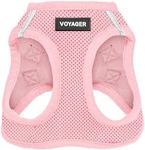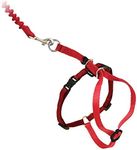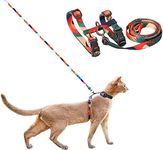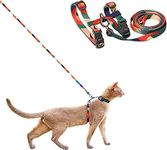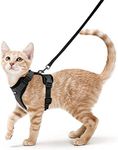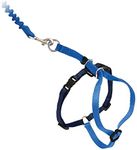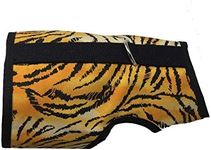Buying Guide for the Best Harnesses For Cats
Choosing the right harness for your cat is important for both their safety and comfort. A good harness allows you to take your cat outdoors or travel with them securely, while also making sure they feel comfortable and not restricted. Since cats are more sensitive and flexible than dogs, picking a harness that fits well and suits your cat’s personality and activity level is key. Always introduce the harness slowly and positively to help your cat get used to it.Harness TypeThe type of harness refers to the overall design and structure, such as H-style, vest-style, or figure-8. This is important because different types offer varying levels of security and comfort. H-style harnesses are lightweight and simple, vest-style harnesses provide more coverage and can feel more secure, while figure-8 harnesses are adjustable and minimal. If your cat is calm and used to harnesses, a lighter style may work, but for escape-prone or anxious cats, a vest-style with more coverage is often safer.
MaterialThe material of the harness affects both comfort and durability. Common materials include nylon, mesh, and cotton. Nylon is strong and lightweight, mesh is breathable and comfortable for warmer weather, and cotton is soft but may not be as durable. If your cat has sensitive skin or will wear the harness for longer periods, look for soft, breathable materials. For active cats or outdoor adventures, choose something sturdy and easy to clean.
AdjustabilityAdjustability refers to how much you can change the size of the harness to fit your cat. This is crucial because a good fit prevents your cat from slipping out or feeling uncomfortable. Harnesses with multiple adjustable points (like at the neck and chest) are best, as they allow you to customize the fit. If your cat is still growing or between sizes, more adjustability gives you flexibility to get the right fit.
Closure TypeClosure type means how the harness fastens, such as with buckles, Velcro, or clips. This matters for both security and ease of use. Buckles are secure and less likely to come undone, but may take longer to put on. Velcro is quick and easy, but can wear out over time or startle sensitive cats with the noise. If your cat is patient, buckles are a good choice; for quick and easy use, Velcro or clips might be better, but always check they hold securely.
Escape-Proof DesignAn escape-proof design means the harness is shaped and fitted in a way that makes it hard for your cat to wriggle out. This is especially important for cats who are new to harnesses or are known to be escape artists. Look for harnesses that fit snugly without being too tight, and that have extra straps or coverage around the chest and shoulders. If your cat is calm and used to harnesses, this may be less critical, but for adventurous or nervous cats, prioritize escape-proof features.
Weight and BulkThe weight and bulk of the harness affect how comfortable your cat will be wearing it. Lightweight harnesses are less noticeable and better for cats who are new to wearing them, while bulkier harnesses may offer more security but can feel restrictive. If your cat is small or sensitive, choose a lightweight, minimal harness. For larger or more active cats, a slightly bulkier harness may be acceptable if it offers better control.
